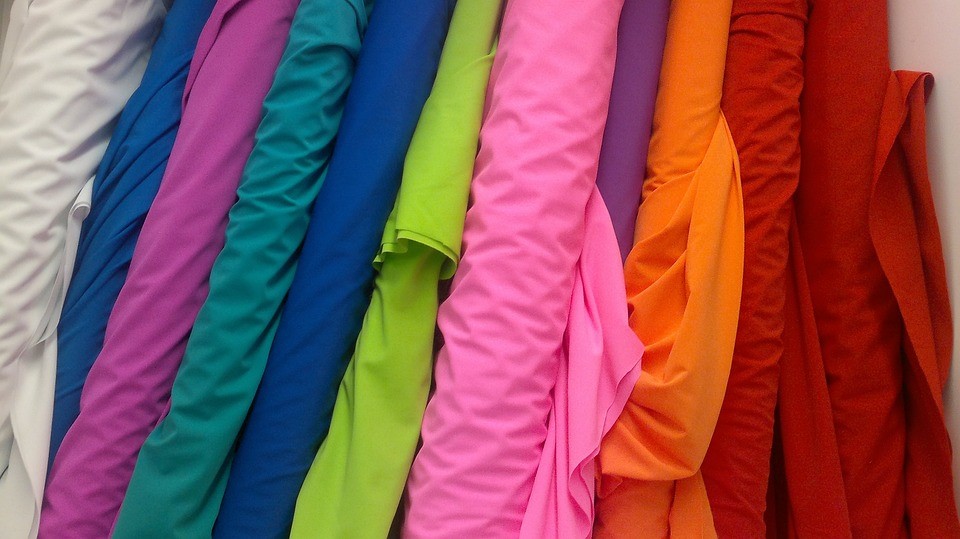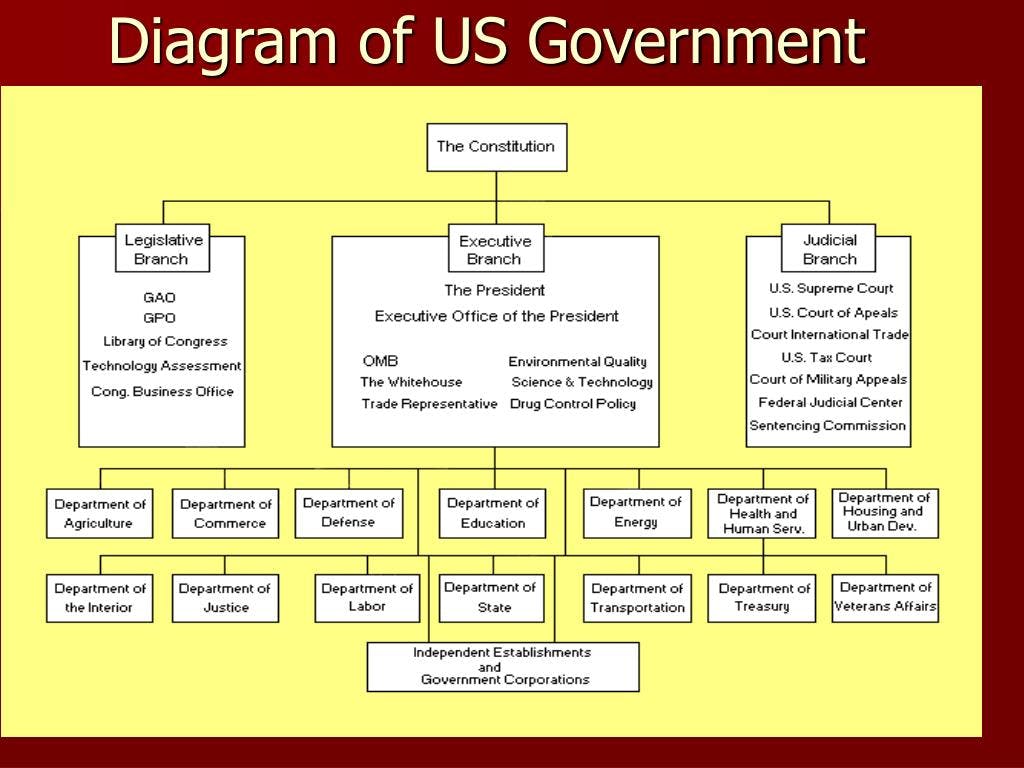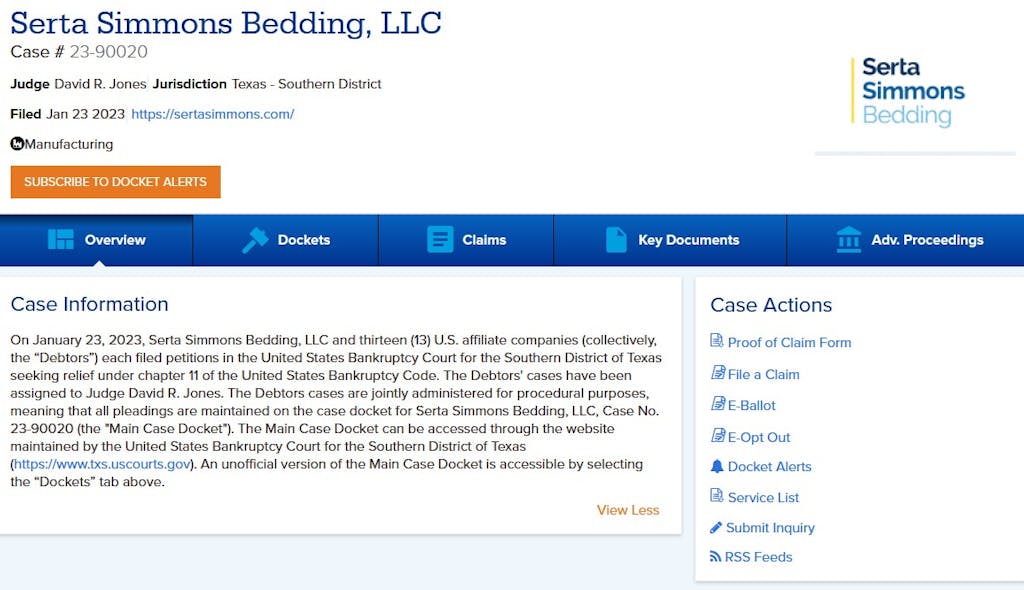The Urethane Blog
Everchem Updates
VOLUME XXI
September 14, 2023
Everchem’s exclusive Closers Only Club is reserved for only the highest caliber brass-baller salesmen in the chemical industry. Watch the hype video and be introduced to the top of the league: — read more
April 11, 2023
Morgan Stanley sees freight upcycle nearing
Shippers becoming less negative on economy, transportation needs
· Monday, April 10, 2023

Listen to this article
0:00 / 4:30BeyondWords
A dash of optimism around improving freight demand in the back half of the year was noted in a quarterly survey of shippers released Monday.
Morgan Stanley’s (NYSE: MS) Freight Pulse showed sentiment among the group improved slightly even as data points have yet to point to an upward trajectory for freight markets. Of shippers polled, 38% said they will likely maintain current inventory levels, which was a 10-percentage-point increase from the fourth-quarter report. The number of respondents saying they need to reduce inventories also declined for the first time since the third quarter of 2021.
Nearly 75% of shippers surveyed expect inventories to normalize in 2023, with almost 50% saying it will happen in the second half of the year.
“Despite all the bad headlines and mixed datapoints on macro, our latest quarterly Shipper Survey keeps showing signs of improvement under the surface,” stated Ravi Shanker, Morgan Stanley transportation equity analyst.
Heading into the first-quarter earnings season, which starts in earnest next week when J.B. Hunt (NASDAQ: JBHT) reports, many analysts are taking a wait-and-see approach to the back half after being more bullish to start the year.
Outlook improves among shippers, capacity to stay loose
Shippers’ overall view of the economy also moved higher for the second consecutive quarter. However, a 4.9 reading remained “comfortably below” the 15-year-old survey’s long-term average of 5.8. Shippers from the manufacturing and food and beverage verticals were most constructive while responses from retail shippers saw the biggest declines.
The outlook for transportation capacity across all modes loosened again.
Capacity predictions for the next six months were the loosest for airfreight and ocean, while rail capacity is expected to be the tightest. However, the outlook for rail capacity saw the biggest sequential deterioration out of all modes.
The outlook for both volume and pricing growth in trucking was described as “pretty grim,” with volumes “consistently in negative territory (similar to 2020 levels but slightly better than 2009 levels).” Pricing sentiment saw the biggest declines ever recorded, down in the low-single-digit range. However, the report pointed out that the comparisons were to record price levels.
FreightWaves’ trucking data has yet to inflect positively. Rejected tenders continue to bobble along the bottom alongside spot rates.


There was no change in truckload capacity expectations, with most respondents indicating intermodal will soon be the loosest mode after being the tightest over the last three quarters. Even with lower TL rates and rail service issues, 43% of shippers said they are shifting some freight from TL to the rails. This was the first increase in a year for the metric with only 25% saying they would make the change a quarter ago.
The report also showed rail volumes will be flat year over year (y/y), down from a 0.7% growth expectation last quarter. Pricing expectations stepped slightly higher but remained below the long-term average. Shippers said rail service has deteriorated, almost reaching the survey low established in the third quarter of last year.
Expectations for parcel call for slight y/y volume growth (except for airfreight) with the rate outlook snapping back into positive territory.
“We are not sure what the macro outlook holds in store for us but what is very clear is that at the current pace of destocking, inventory levels should be normalized soon and if the consumer holds up in 2H23, conditions are ripe for a restocking upcycle (esp. if we also overcorrect on inventory destocking),” Shanker said.
April 10, 2023
New Breakthrough in Differentiated Spandex May Trigger New Growth Points for PTMEG
PUdaily | Updated: April 10, 2023
On March 29, during Yarn Expo Spring 2023, Lianyungang LDZ New Aoshen Spandex Co., Ltd. launched two differentiated spandex products, temperature-sensitive shape memory spandex and deodorant spandex, at its own new product launch event. According to the manufacturer’s introduction, the elasticity of temperature-sensitive shape memory spandex can change with temperature, achieving characteristics of easy wear below the transition temperature and high resilience at or above the transition temperature; while deodorant spandex maintains water resistance while having the function of neutralizing and decomposing odor molecules.
In China’s total synthetic fiber output, spandex accounts for only 1-2%. It is usually used in the manufacturing of some elastic fabrics, especially sportswear and leisurewear. With the improvement of mass consumption, people’s requirements for fabrics have gradually increased. At present, China’s spandex industry has become quite mature, and the industry’s growth rate has been greater than 10% in recent years, especially the demand for differentiated and high-end spandex has grown significantly. As the main downstream product of PTMEG, spandex accounts for about 90% of PTMEG consumption. In recent years, the growth of the spandex industry has also driven the stable development of the PTMEG industry.

Recent Market Trends: Since the beginning of March, China’s spandex market has been showing a sustained mild weakness. The post-pandemic demand recovery was not strong as expected, and the national consumption sentiment in the textile industry was not high. The peak season for spandex was slightly shorter than in previous years, and prices fell slightly during the month. By the end of March, spandex manufacturers’ orders gradually decreased, and there were few summer orders obtained by them. Although the operating rate could still be maintained at around 80%, due to the inability of spandex to be stored for a long time, spandex manufacturers’ confidence declined, and their enthusiasm for purchasing feedstocks was difficult to sustain. Against this backdro, it has been difficult for PTMEG suppliers to continue supporting the market, and prices have fallen.
Market Outlook: Owing to the international political situation and economic conditions, some countries in the Middle East and South Asia are facing difficulties in approving letters of credit, and the strike wave in many European countries is affecting port operations. The pattern of weak overseas demand may be difficult to change in the short term. Chinese demand has rebounded visibly, but the speed of economic recovery is still unable to quickly boost the textile industry. Downstream manufacturers in the PTMEG-spandex industry chain mainly made replenishment purchases on rigid demand, and it is difficult to change the market weakness in the short term. However, in the long run, the textile industry is still one of the pillar industries in China’s economy. With the growth of the national economy, the demand for textile and its upstream feedstocks will continue to grow. Moreover, the emergence of differentiated spandex will expand the application fields from simple knitted fabrics to medical bandages, healthcare products, car interiors, artificial organ materials and many other areas, thus opening up broader market space. In the industry landscape with multiple growth points, there is still considerable room for growth in the spandex industry, which will drive the positive expectation for PTMEG consumption.
April 10, 2023
Personnel changes at BASF

MOSCOW (MRC) — The Board of Executive Directors of BASF SE has decided on the following personnel changes, said the company.
Tobias Dratt (50), President, North America, BASF Corporation, Florham Park, New Jersey, will assume responsibility for the Division Global Business Services, Ludwigshafen, Germany, effective May 1, 2023.
Marc Ehrhardt (54), President, Global Business Services, Ludwigshafen, will, at the same time, assume responsibility for the Division North America, BASF Corporation, Florham Park, New Jersey.
We remind, BASF will establish compounding capacities for its certified compostable biopolymer ecovio in Shanghai, China, said the company. Upon the successful completion of qualification trials, commercial material quantities will be available for customers throughout the region Asia-Pacific from mid-2023.
https://www.mrchub.com/news/407096-personnel-changes-at-basf
April 6, 2023
Biden-Harris Administration Proposes to Strengthen Standards for Chemical and Polymers Plants, Dramatically Reduce Cancer Risks from Air Toxics
Proposal would reduce the number of people with elevated cancer risk by 96 percent in communities surrounding chemical plants, cut more than 6,000 tons of toxic pollution per year

April 6, 2023
Contact Information
EPA Press Office (press@epa.gov)
WASHINGTON – Today the U.S. Environmental Protection Agency (EPA) announced a proposal to significantly reduce hazardous air pollutants from chemical plants, including the highly toxic chemicals ethylene oxide (EtO) and chloroprene. The reductions would dramatically reduce the number of people with elevated air toxics-related cancer risks in communities surrounding the plants that use those two chemicals, especially communities historically overburdened by air toxics pollution, and cut more than 6,000 tons of toxic air pollution a year.
The proposal advances President Biden’s commitment to ending cancer as we know it as part of the Cancer Moonshot and to securing environmental justice and protecting public health, including for communities that are most exposed to toxic chemicals. Administrator Michael Regan made the announcement at an event in St. John the Baptist Parish, Louisiana – one of the communities the Administrator visited during his November 2021 Journey to Justice tour.
“For generations, our most vulnerable communities have unjustly borne the burden of breathing unsafe, polluted air,” said EPA Administrator Michael S. Regan. “When I visited St. John the Baptist Parish during my first Journey to Justice tour, I pledged to prioritize and protect the health and safety of this community and so many others that live in the shadows of chemical plants. I’m proud that this proposal would help deliver on that commitment and protect people from toxic air pollution in communities across the country – from Louisiana and Texas, to Kentucky, West Virginia, and Ohio. Every child in this country deserves clean air to breathe, and EPA will use every available tool to make that vision a reality.”
EPA’s proposal would update several regulations that apply to chemical plants, including plants that make synthetic organic chemicals, and regulations that apply to plants that make polymers such as neoprene. The proposed updates would reduce 6,053 tons of air toxics emissions each year, which are known or suspected to cause cancer and other serious health effects. Those reductions include a 58 ton per year reduction in ethylene oxide (EtO) and a reduction of 14 tons per year in chloroprene.
Other air toxics the rule would reduce include benzene, 1,3-butadiene, ethylene dichloride and vinyl chloride. The proposal would also reduce emissions of smog-forming volatile organic compounds by more than 23,000 tons a year.
Facilities that make, store, use or emit EtO, chloroprene, benzene, 1,3-butadiene, ethylene dichloride or vinyl chloride would be required to monitor levels of these air pollutants entering the air at the fenceline of the facility, a requirement that would deliver on one of the commitments the Administrator made following his 2021 Journey to Justice tour. This powerful tool would help make sure EPA’s rules deliver: if annual average air concentrations of the chemicals are higher than an action level at the fenceline, owners and operators would have to find the source and make repairs. The proposed action levels vary depending on the chemical. For EtO, EPA is proposing an action level of 0.2 micrograms per cubic meter of air. For chloroprene, the proposed action level is 0.3 micrograms per cubic meter of air.
In order to ensure this data is transparent and available to communities, EPA would make the monitoring data public through its WebFiRE database tool. These fenceline monitoring provisions are based on similar Clean Air Act requirements for petroleum refineries nationwide, which have been highly successful in identifying and reducing emissions of benzene for more than four years.
The proposal would reduce cancer risks from breathing in toxic air pollutants that are emitted from the specific processes and equipment covered under the rules. These pollutants are linked to a number of cancers, including lymphoma, leukemia, breast cancer and liver cancer, among others. EPA also expects the proposal to benefit children, who are more susceptible to the effects of EtO and chloroprene.
To provide the public with the best possible information about the impact of the proposed updates, EPA has conducted a first-of-its kind community risk assessment. That assessment evaluated the impacts of the proposed emissions reductions from synthetic organic chemical manufacturing on the total air toxics-related cancer risks from all large industrial facilities in an area combined – not just from the equipment and processes covered by today’s proposal. The community risk assessment shows that the numbers of people with elevated cancer risk could drop by 96 percent in communities surrounding chemical plants, if the proposal is finalized.
The community assessment also shows there is more work to do, finding that EtO is the largest driver of the remaining risks. In the coming weeks, EPA expects to announce proposed updates to its regulations for commercial sterilization facilities that emit EtO. In addition, the Agency is working to develop proposed rules for other sources of EtO, including polyether polyols production, hospital sterilizers, and smaller chemical manufacturers known as “area sources.”
EPA will accept written comments for 60 days after the proposal is published in the Federal Register and will hold a virtual public hearing. The Agency also will hold a training for communities on April 13, 2023, to review the proposal and answer questions. Learn more.
April 6, 2023
Serta Simmons Bedding, LLC

Case # 23-90020
Judge David R. Jones
Jurisdiction Texas – Southern District
Filed Jan 23 2023
Manufacturing
- Overview
- Dockets
- Claims
- Key Documents
- Adv. Proceedings
Case Information
On January 23, 2023, Serta Simmons Bedding, LLC and thirteen (13) U.S. affiliate companies (collectively, the “Debtors”) each filed petitions in the United States Bankruptcy Court for the Southern District of Texas seeking relief under chapter 11 of the United States Bankruptcy Code. The Debtors’ cases have been assigned to Judge David R. Jones. The Debtors cases are jointly administered for procedural purposes, meaning that all pleadings are maintained on the case docket for Serta Simmons Bedding, LLC, Case No. 23-90020 (the “Main Case Docket”). The Main Case Docket can be accessed through the website maintained by the United States Bankruptcy Court for the Southern District of Texas (https://www.txs.uscourts.gov). An unofficial version of the Main Case Docket is accessible by selecting the “Dockets” tab above.View Less
Case Actions
- Proof of Claim Form
- File a Claim
- E-Ballot
- E-Opt Out
- Docket Alerts
- Service List
- Submit Inquiry
- RSS Feeds
Equity Transfer Procedure Documents
• Notice of Substantial Stock Ownership
• Notice of Intent to Purchase, Acquire or Otherwise Accumulate Dawn Stock
• Notice of Intent to Sell, Trade or Otherwise Transfer Dawn Stock
• Declaration of Intent to Claim a Worthless Stock DeductionView Less
Press Release
Restructuring Information
The company is operating as normal and is serving retail partners and sleepers as usual. SSB’s manufacturing facilities are fulfilling orders, and the company is continuing to work with suppliers and vendors in the ordinary course of business. SSB also has meaningful launches planned for this year from Serta and Beautyrest.
For information and inquiries about this matter, please call the numbers listed below. U.S.-based parties should use the toll free number below. International parties should use the non-U.S. number below.
Toll Free U.S. #: (877) 618-5414
Non U.S. #: +1 (503) 966-3043
Additional information regarding the court-supervised process is available on SSB’s restructuring website, www.SSBRestructuring.com.
Supplier Frequently Asked QuestionsView Less
Key Dates
23
JAN
10:02 PM CT
2023
ADD TO CALENDAR
24
JAN
01:00 PM CT
2023
ADD TO CALENDAR
27
JAN
03:30 PM CT
2023
ADD TO CALENDAR
1
FEB
12:00 PM CT
2023
Continued Scheduling Conference
ADD TO CALENDAR
1
MAR
01:00 PM CT
2023
ADD TO CALENDAR
14
MAR
10:00 AM CT
2023
ADD TO CALENDAR
16
MAR
05:00 PM CT
2023
ADD TO CALENDAR
23
MAR
09:00 AM CT
2023
ADD TO CALENDAR
29
MAR
10:00 AM CT
2023
ADD TO CALENDAR
5
APR
01:45 PM CT
2023
ADD TO CALENDAR
1
MAY
04:00 PM CT
2023
ADD TO CALENDAR
8
MAY
09:00 AM CT
2023
Confirmation Hearing; Final Hearing re: Cash Management Motion
ADD TO CALENDAR
22
JUL
05:00 PM CT
2023
ADD TO CALENDAR
Section 341 Meeting of Creditors
Pursuant to Section 341 of the Bankruptcy Code, a meeting of creditors was held telephonically on March 14, 2023 at 10:00 a.m. (CT).
Notice of Chapter 11 Bankruptcy Case [Docket No. 187]
Debtors (14)
Lead Debtor 23-90020 Serta Simmons Bedding, LLC
Related Debtors
23-90019
Dawn Intermediate, LLC
23-90024
Dreamwell, Ltd.
23-90022
National Bedding Company L.L.C.
23-90021
Serta International Holdco, LLC
23-90027
Simmons Bedding Company, LLC
23-90025
SSB Hospitality, LLC
23-90026
SSB Logistics, LLC
23-90018
SSB Manufacturing Company
23-90030
SSB Retail, LLC
23-90023
The Simmons Manufacturing Co., LLC
23-90029
Tomorrow Sleep LLC
23-90028
Tuft & Needle, LLC
23-90031
World of Sleep Outlets, LLC
Dawn Holdings, Inc., Serta, Inc., Serta Canada Ltd., SSH Canada Holding Co., LLC, SSH Bedding Canada Co., and Simmons Caribbean Bedding, Inc. are not part of the filing.

